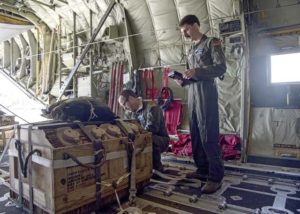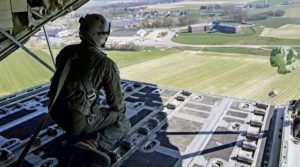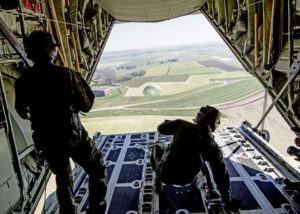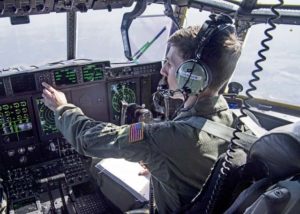
As global emergency responders, members of the 37th Airlift Squadron stay mission ready during the coronavirus disease 2019 pandemic.
Three of the squadron’s C130J Super Hercules aircraft took to the skies above Chievres Air Base, Belgium, March 26, to maintain combat capabilities by performing and staying certified at low-level flights and different styles of air drops.

“Our mission is to project combat power throughout the European and African theatres,” said Lt. Col. Henry Pflugradt, 37th AS director of operations. “We are the sole airlift unit for both areas, and our job is to deliver goods and people during times of crisis, peacetime and humanitarian support.”
The 37th AS maintains its combat capabilities regardless of the situation.
While mission numbers have decreased since COVID-19 restrictions, aircrews are still conducting training that test different mission capabilities.

Throughout March, the 37th AS conducted 120 flying missions, with a majority of them being local training missions.
During COVID-19, aircrews continue to stay healthy and ready through the strict adherence of hygiene measures.
“We have our ‘wipe-in, wipe-out’ policy,” Pflugradt said. “Everywhere we operate that has shared resources, which includes our mission planning equipment as well as the aircraft itself, gets sanitized.”
To reduce the risk of possible spread of COVID-19, the 37th AS has also minimized the amount of people within the unit to only those needed to execute the operational mission.

“We’re taking precautions to make sure we’re not further spreading this disease, and making sure our force and the general population can stay healthy while maintaining our combat readiness posture,” said Lt. Col. Gregory Kantz, 37th AS commander.

Members of the 37th AS have stayed vigilant during this stressful time and use these struggles to build their resiliency.
While the squadron hasn’t had any cases of COVID-19, they continue to take necessary precautions to remain ready and healthy no matter the situation to provide aerial support and continue the mission of professional airlift.







